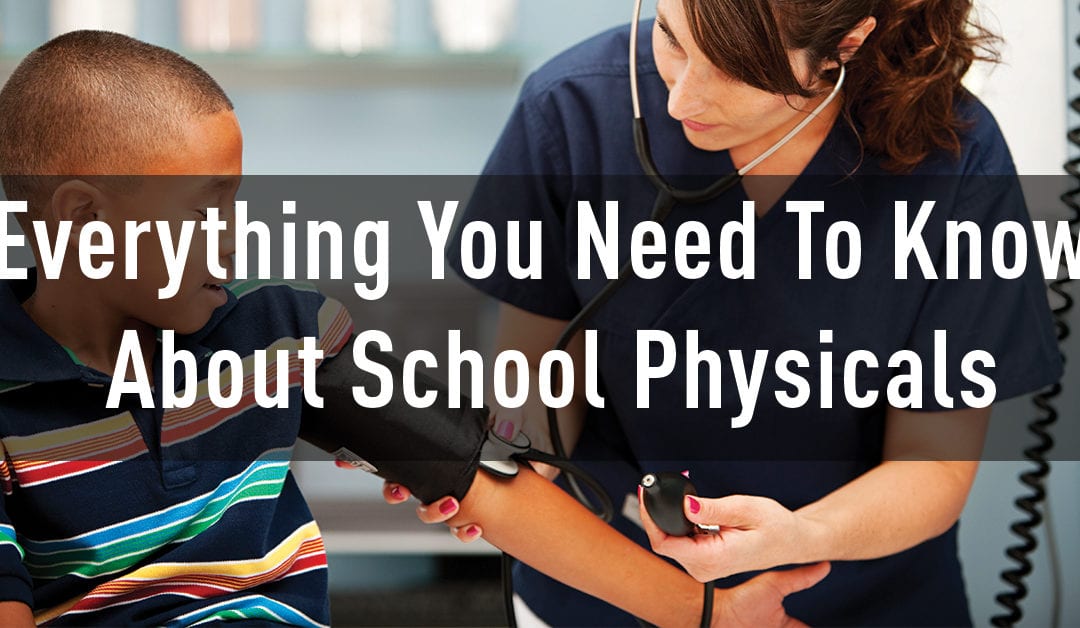The ultimate goal of school physicals is to make sure your child is safe and healthy for the upcoming school year. These annual visits are a surefire way to way to keep tabs on your child’s health, get their official growth statistics, and have a real conversation with their doctor about any concerns, questions, or changes to look for in the upcoming year.
Here at Family Healthcare of Siouxland, we know how busy your summers are, but we’re here to make sure your child is ready to start school again in the August with their shots up to date and all their paperwork on file. Be prepared. Here is everything you need to know when it comes to school physicals.
What are school physicals and why are they so important anyway?
School physicals are wellness checkups that are required by most schools before a student can participate in sports and other activities. They are typically the only visit children and teenagers have with their doctors every year. This annual appointment gives doctors a chance to monitor development and address any physical, emotional, or social concerns.
Physicals are also an excellent opportunity to make sure that your child’s vaccinations are up-to-date and that they have no urgent health concerns. These checkups give the school and athletic staff information to best provide for your child.
What’s the difference between well-child visits, school physicals, and athletic physicals?
These are just different names for basically the same wellness checkup. The main difference is that the appointment can be adapted to best suit your child’s needs. If you child is an athlete, it is extremely important to tell the doctor what sports your child plays, how often they practice, and any sports related injuries they’ve had in the past. The doctor can then provide a more extensive physical exam based on the needs of an athlete versus a non-athlete.
It is also important to remember that it is highly unlikely that your child will fail their athletic exam and not be able to play sports. The goal of sports physicals is to make sure your child is safe while playing sports and not to stop your child from participating.
Why do you need to provide so much medical history?
The medical history section usually involves questions like:
- Serious illnesses among family members
- Illnesses the child was diagnosed with when they were younger (asthma, diabetes, etc)
- Previous hospitalizations or surgeries
- Past injuries
- When your child has ever passed out, felt dizzy, had chest pain, or trouble breathing during exercise
- Any current medications
Providing this information may possibly be the most important part of the exam. You should take your time answering these questions and have your child help so they know their medical history. Doctors look at this information to consider possible conditions a child might have.
What should you bring?
You should bring any medical forms that you need to have the doctor fill out. As well as glasses, contacts, or hearing devices if your child normally wears them.
What does a school physical include, and is it invasive?
School physicals are non-invasive and straightforward. The doctor will:
- Record weight and height
- Check vital signs (heart rate, blood pressure, etc.)
- Test your child’s vision and hearing
- Check heart, lungs, abdomen, ears, nose, and throat
- Evaluate your child’s posture, joints, strength, and flexibility
Throughout the screening, we will let you know if anything is a cause for concern or requires further evaluation. It is always the goal of FHCSL to make our medical exams as pleasant and relaxed as possible. The more comfortable your child is, the more accurate our assessment can be.
How do school physicals differ at different stages of a child’s life?
The goal of a school physical is the same at any stage of a child’s life, but you can expect new aspects as your child gets older.
Preschool and kindergarten aged children need to make sure they’re up to date with all their vaccinations before starting school. This is also the age where children learn what to expect at the doctor’s office, what questions they should be asking, and how to make their health an important part of their life.
Exams for elementary aged kids teach them how to be healthy and tune into their bodies. Most kids are also excited to learn how much they’ve grown since their last visit.
Middle school is when exams start getting tricky. Adolescents go through a lot of changes between the ages of 11-14, so let the doctor take the lead on explanations. Your doctor will also have tips on how to navigate this time of great change with as much knowledge, strength, and self-confidence as possible.
High schoolers are pretty much ready to take the reigns on their annual wellness exams. The doctor will help equip them with the tools, resources, and support to help them make the best decisions for themselves.
It’s also a good idea for you and your child to prepare a list a questions before the exam. If you need a little help coming up with questions to ask, here are some of our suggestions.
When is the best time to schedule school physicals?
Right now! Call us today and we’ll do our best to accommodate your schedule and your physician preferences.

